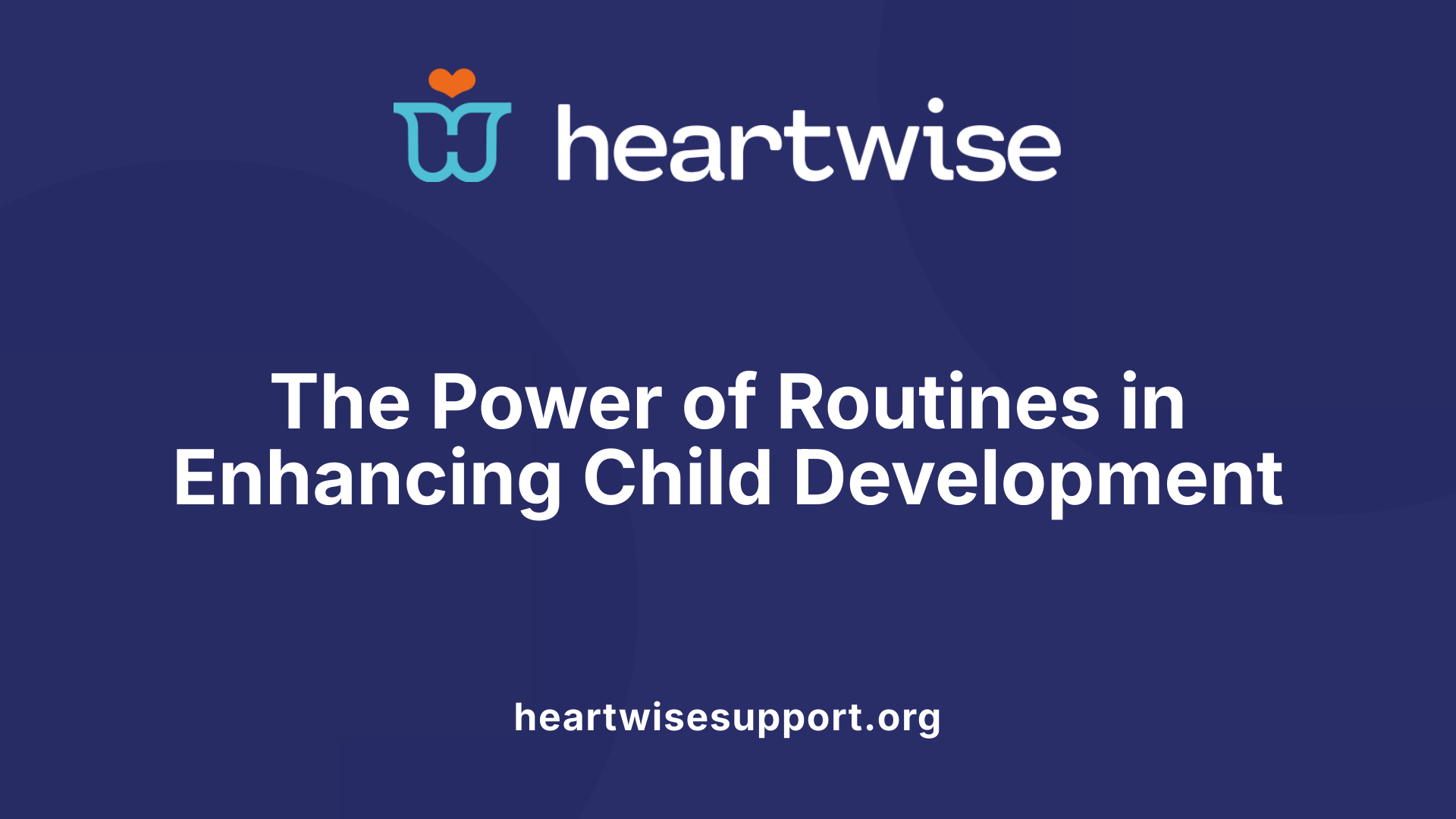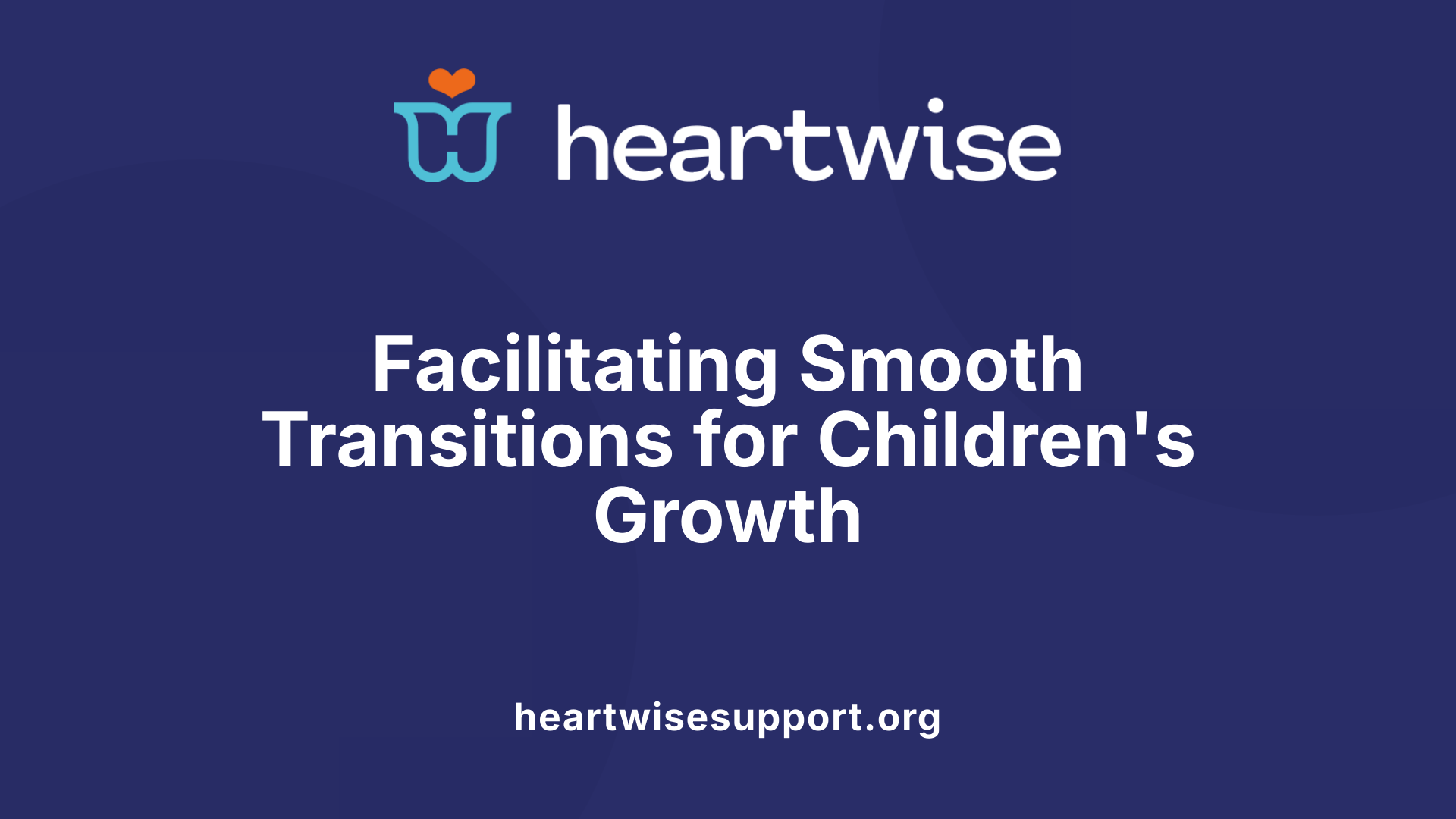Understanding the Importance of Supporting Transitions in Early Childhood and Family Life
Transitions are natural parts of a child's development, encompassing daily routines, environmental changes, and significant life events. Effective management of these transitions can profoundly influence a child's emotional well-being, learning, and overall development. This article explores evidence-based strategies for supporting family routines and transitions, emphasizing the vital role of caregivers, educators, and families working collaboratively to foster resilience, build skills, and ensure positive experiences for children across various settings.
The Role of Routines in Supporting Child Development

How do routines and transitions support children’s learning and development?
Routines and transitions are fundamental in helping children develop emotionally, socially, and cognitively. When routines are predictable, children feel safer and more secure, which fosters confidence and independence. Consistent routines, such as daily mealtimes, bedtime, and getting ready for school, provide children with a sense of stability, allowing them to focus on learning and play.
Transitions between activities or environments, if well-managed, teach children self-regulation skills. For instance, using visual cues or countdowns prepares children emotionally and helps them adapt smoothly to changes. When children know what to expect, they are less likely to become overwhelmed or anxious.
Engaging children and families in navigating routines encourages a sense of belonging and strengthens relationships. It gives children practice in problem-solving, language acquisition, and social skills as they participate actively in daily activities. Educators and caregivers who plan routines intentionally can extend learning by asking questions, offering choices, and supporting children’s efforts during transitions. This collaborative approach caters to diverse needs and respects individual differences, ultimately enriching each child’s developmental journey.
Strategies for Supporting Families and Children at Home

How can families support routines and transitions at home?
Families play a vital role in helping children manage routines and transitions smoothly. Creating consistent daily schedules gives children a predictable environment, making them feel safe and secure. Regular routines for waking, meals, play, and bedtime set a foundation for stability.
Discussing upcoming changes in advance prepares children emotionally. Using visual cues like charts, picture schedules, or countdowns can help children understand and anticipate what’s next. For example, a simple countdown to bedtime or school drop-off reassures young children and reduces anxiety.
Family rituals and involving children in daily routines strengthen emotional bonds and foster resilience. Activities such as morning greetings, special goodbye rituals, or celebrating small successes create a sense of belonging and predictability.
Supporting transitions with tools like stories, songs, and mindfulness activities can ease children’s worries. For instance, singing a transition song before switching activities or reading a story about change can make the experience less intimidating.
Maintaining open communication is essential. Validating children’s feelings, offering reassurance, and patiently answering questions help children feel heard and understood. When children feel supported and secure in their home environment, they are better prepared to navigate broader transitions, such as starting school or moving homes. Overall, these strategies create a nurturing space where children can develop confidence and emotional regulation skills.
Addressing Challenges: Helping Children with Difficult Transitions

How can caregivers help a child who struggles with transitions?
Children often find transitions stressful, especially during early childhood when their emotional regulation skills are still developing. To assist them, caregivers should establish consistent routines that provide a predictable structure throughout the day. For example, regular wake-up times, meal routines, and bedtime schedules create a sense of security.
Using visual supports such as picture schedules, visual cues, or timers can be very effective. These tools help children understand what’s coming next and provide advance warning. For example, a visual schedule displayed at eye level or a digital countdown can prepare children emotionally, making transitions less abrupt.
Pre-transition previews like countdowns or verbal explanations also help children get ready for change. Incorporating sensory activities—such as calming textures, gentle music, or deep pressure—can soothe children with sensory sensitivities. Offering choices during transitions, like selecting a toy or activity, gives children a sense of control.
Transitional objects, like a favorite stuffed animal or a blanket, can serve as comfort items that ease anxiety.
Building a strong connection with the child through praise, eye contact, or brief moments of attention before and after transitions reinforces feelings of safety. Tailoring strategies to each child's unique needs—such as implementing calming techniques for children with sensory processing challenges or using visual supports for children with autism—can lead to better outcomes.
In essence, a combination of predictable routines, visual supports, sensory calming strategies, and emotional connections helps children navigate transitions with greater ease, fostering confidence and reducing stress.
Supporting Transition Moments: From Play to Learning and Life Events

What are some examples of children’s transitions?
Children experience many changes as they grow, and supporting them during these times is essential for healthy development. Common examples include moving from one activity to another, such as transitioning from playtime to mealtime or from outdoor activities to indoor classes. These shifts help children learn routines and self-regulation.
Developmental milestones also mark significant transitions. For example, infants moving from a bassinet to a toddler bed, toddlers beginning potty training, and preschoolers transitioning into kindergarten are all crucial points. Environmental changes, such as switching from home to daycare or school, are also key transitions.
Family changes, like the birth of a sibling, a move to a new house, or adapting to new childcare arrangements, add to these transitions. To support children effectively, caregiving routines should be predictable, supplemented by visual schedules, cues, and engaging activities that make transitions manageable and less stressful.
What are examples of family transitions and their impacts?
Family transitions refer to major life changes that can influence children's emotional and social well-being. These include divorce, remarriage, relocation, the arrival of a new family member, serious illness, or the loss of a loved one.
Such transitions often trigger feelings of grief, anxiety, or frustration in children and can alter family routines, roles, and dynamics. These changes may impact a child's sense of security and stability, sometimes leading to behavioral or emotional difficulties.
Support during family transitions is vital. Strategies involve open and honest communication, reassurance, maintaining routines where possible, and seeking support from community resources or professionals. Building resilience involves helping children develop emotional regulation and adaptability, fostering a supportive environment where their feelings are validated.
While family transitions can be challenging, proactive planning, ongoing support, and fostering strong relationships help families navigate these periods with less stress. Acknowledging the emotional impact and providing consistent care allows children to adjust more effectively and maintain healthy development.
Strategies for effective transitions in child care
Effective transition strategies are fundamental in early childhood settings to promote positive experiences and reduce stress. These include creating predictable routines and visual supports, such as charts with pictures or timers, which help children anticipate and prepare for changes.
Using songs, soundtracks, or games can make transitions fun and engaging, especially for younger children. Giving advance notice, turning transitions into routines or rituals—like a special handshake or song—can also ease anxiety.
Involving children in the process by giving choices or using transition objects (like a favorite toy) fosters independence and a sense of control. Adults should validate feelings, acknowledge children’s emotions, and offer comfort when needed.
Consistency is crucial. Having a set sequence of activities and clear cues helps children understand what’s coming next. Staff training on managing challenging behaviors and communicating effectively with children and families ensures smoother transitions.
Finally, collaboration with families to align routines and share information about each child's needs supports continuity between home and child care. These strategies create a supportive environment where children feel secure, develop self-regulation skills, and enjoy positive, stress-free transitions.
Implementing Transition Strategies: The Role of Educators and Professionals

How can educators implement effective transition strategies in the classroom?
Teachers and caregivers can make transitions smoother by establishing consistent routines and using visual or auditory signals. For example, visual cues like picture schedules and timers can help children understand what’s coming next. Incorporating movement, songs, or fun activities during transitional moments keeps children engaged and prepared.
Teaching children the steps of a transition beforehand and practicing these routines can boost their confidence and reduce anxiety. Using social stories or visual supports helps children grasp what to expect and feel secure.
Good communication is essential. Giving warnings before transitions, such as counting down or using visual timers, helps children emotionally prepare. Observing how different strategies work and adjusting them ensures you meet each child's needs. These methods promote calm, focused environments where children feel ready to move on to the next activity.
What are some transition strategies for children with disabilities?
Strategies tailored for children with disabilities focus on predictability and comfort. Visual tools like picture schedules, timers, and countdowns can help children anticipate upcoming changes. Rehearsing transition routines and offering positive reinforcement encourages successful adjustments.
Using transition objects, such as a favorite toy or photo, can provide solace and familiarity, especially for children with Autism or other developmental disabilities. Creating sensory-friendly areas then provides space for emotional regulation during stressful moments.
Collaborating with families and other professionals to develop personalized transition plans ensures each child's unique needs are addressed. These plans might include goal-setting for movement from preschool to kindergarten or independence activities. Incorporating these techniques can make transitions less overwhelming and more supportive for children with special needs.
Building routines and visual supports
A well-structured routine provides children with a sense of stability, which is vital during transitions. Visual supports like schedules, cues, and social stories clarify expectations and promote autonomy.
Collaborative planning with families
Involving families in transition planning fosters consistency and shared understanding. Regular communication, home visits, and joint goal-setting help align routines and expectations.
Creating supportive environments
Designing classrooms with clear visual cues, designated transition areas, and sensory-friendly options creates a calm atmosphere. Incorporating music, movement, and flexible scheduling further supports children through changes.
| Strategy | Implementation Approach | Benefits | Additional Details |
|---|---|---|---|
| Visual Schedules | Use pictures or icons to show daily routines | Reduces anxiety, promotes independence | Can be placed on walls or shared digitally |
| Timers and Cues | Signal transition time with auditory/visual prompts | Prepares children, reduces surprises | Helps especially children with special needs |
| Routine Rehearsal | Practice transitions regularly | Builds confidence, reduces resistance | Adapt routines to developmental levels |
| Collaboration | Work with families and specialists | Ensures consistency, individual needs met | Supports positive adaptation |
| Environmental Supports | Create calm, organized spaces | Eases sensory overload | Includes sensory tools and clear signage |
Supporting smooth transitions benefits children’s emotional well-being and fosters positive learning experiences. By combining routines, visual supports, collaboration, and supportive environments, educators and professionals can help children navigate life’s changes with confidence and ease.
Fostering Resilience and Bonding Through Consistent Routines
Supporting children and families through routines and transitions requires intentional planning, empathetic understanding, and collaborative effort. Establishing predictable routines provides children with a sense of security and control, helping them navigate life's changes with confidence. Visual supports, clear communication, and positive reinforcement are essential tools for reducing anxiety and encouraging cooperation. Recognizing the emotional responses children experience during transitions allows caregivers to validate their feelings and build emotional resilience. For families, maintaining open dialogue, using familiar rituals, and involving children in planning help foster stability and strengthen bonds. Educators and professionals play a crucial role by implementing structured strategies, fostering inclusive environments, and collaborating with families to support each child's unique needs. Ultimately, nurturing resilience through supportive routines and transitions enhances children's well-being, promotes lifelong skills, and creates a foundation for healthy development.
References
- Family Transitions and Routines: Resources - Trying Together
- How Can We Help Kids With Transitions? - Child Mind Institute
- Routines and Transitions | NAEYC
- Family routines: how and why they work - Raising Children Network
- Supporting Your Child Through Transitions and Big Life Changes
- [PDF] Family Routine Guide - National Center for Pyramid Model Innovations
- Supporting Transitions - National Center for Families Learning











